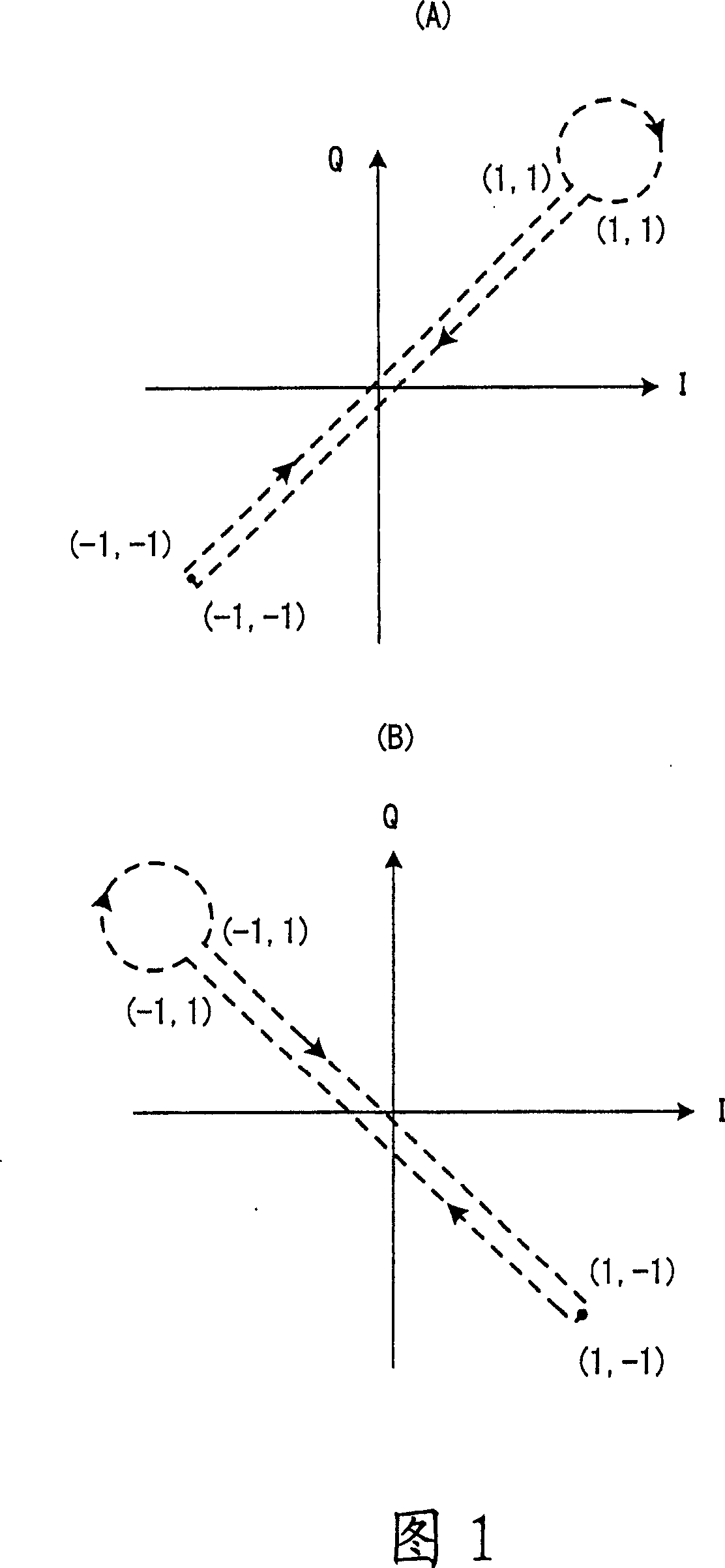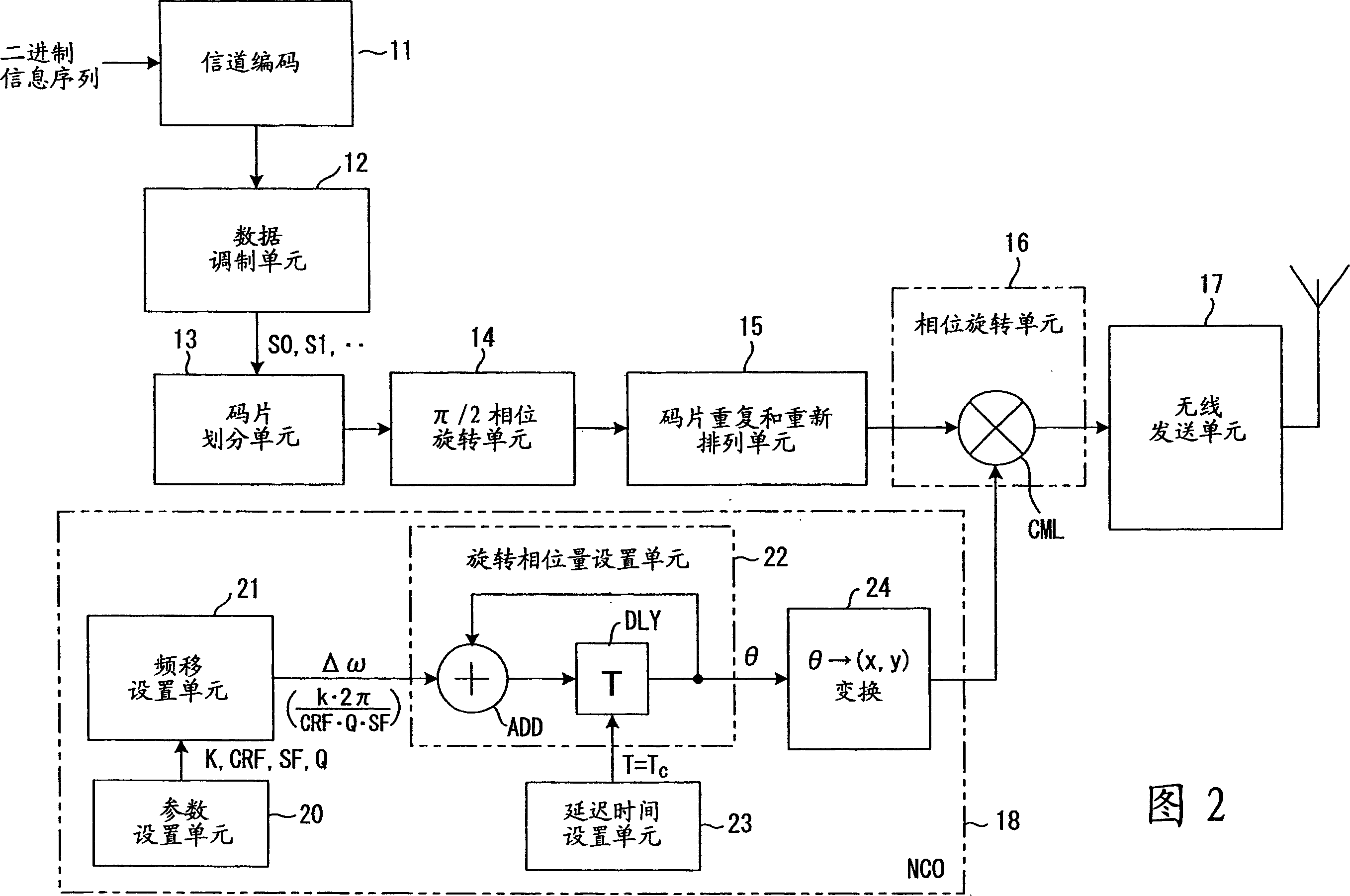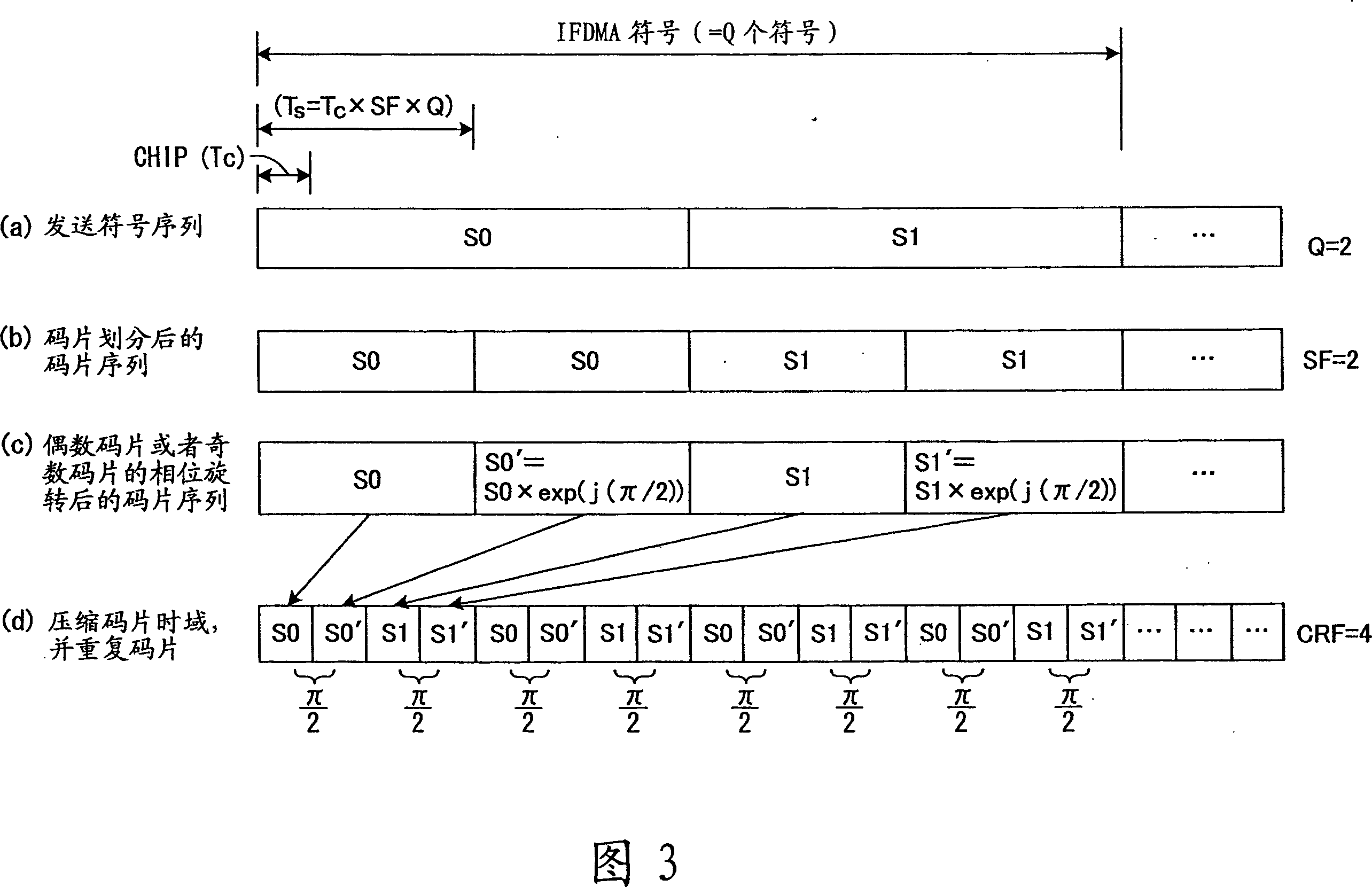Frequency-division multiplexing transceiver apparatus and method
A frequency division multiplexing and transmission device technology, applied in the field of frequency division multiplexing transceiver devices, can solve the problem of not reducing the PAPR of the transmission signal, and achieve the effect of reducing PAPR and suppressing the peak value
- Summary
- Abstract
- Description
- Claims
- Application Information
AI Technical Summary
Problems solved by technology
Method used
Image
Examples
no. 1 example
[0104]FIG. 2 is a block diagram of a frequency division multiplexing transmission device of the first embodiment of the present invention, and FIG. 3 is a diagram for explaining the operation of the frequency division multiplexing transmission device. The frequency division multiplexing transmission apparatus of this first embodiment can be used as a mobile station.
[0105] The channel encoder 11 performs channel encoding by applying error correction encoding such as turbo encoding or convolutional encoding to the input binary information sequence, and the data modulation unit 12 converts the channel-encoded data sequence into I, Q complex number components in QPSK, for example (symbol). As shown in (a) of FIG. 3 , one IFDMA symbol consists of Q (Q=2 in the figure) symbols S0 and S1.
[0106] The chip division unit 13 divides each symbol of the transmitted symbol sequence into SF (in the figure, SF=2) chips (see (b) of FIG. 3 ), and the π / 2 phase rotation unit 14 pairs divid...
no. 2 example
[0113] In a first embodiment, the phase of the even or odd chips in the chip sequence is rotated by π / 2 or -π / 2 in order to reduce the PAPR. In the first embodiment, however, the phase rotation unit 16 also performs a frequency shift specific to the mobile station. Therefore, depending on the frequency dedicated to the mobile station, there are cases where the PAPR cannot be reduced. FIG. 4 is a diagram explaining operations in these cases, and (a) to (d) of FIG. 4 correspond to (a) to (d) of FIG. 3 when Q=1, SF=2, and CRF=4.
[0114] The amount of phase rotation θ performed for each symbol of the repeating chip sequence (see (d) of FIG. 4 ) is given by formula (6). When Q=1, SF=2, CRF=4, and k=2, the phase rotation unit 16 performs phase rotation that increases sequentially in increments of π / 2 for each chip. As a result, the phase rotation amount of each chip becomes as shown in (e) and (f) of FIG. 4 , and the frequency spectrum becomes as shown in (h) of FIG. 4 .
[0115...
no. 3 example
[0144] Fig. 11 is a block diagram of the frequency division multiplexing transmission device of the third embodiment of the present invention, and Fig. 12 is a figure explaining the operation of this frequency division multiplexing transmission device, wherein in Fig. 11, the first implementation shown in Fig. 2 Like parts of the examples are given the same reference numerals.
[0145] This third embodiment differs from the first embodiment in that it compresses the time domain of each symbol of the transmission sequence, then repeats these symbols a specified number of times (CRF times), and rearranges the obtained repeated symbol sequence symbols, making the permutation the same as that of the transmitted symbol sequence, after which chip division and π / 2 phase rotation are performed; the operations of other parts are the same.
[0146] The channel encoder 11 performs channel encoding by performing error correction encoding such as turbo encoding or convolutional encoding on...
PUM
 Login to View More
Login to View More Abstract
Description
Claims
Application Information
 Login to View More
Login to View More - R&D
- Intellectual Property
- Life Sciences
- Materials
- Tech Scout
- Unparalleled Data Quality
- Higher Quality Content
- 60% Fewer Hallucinations
Browse by: Latest US Patents, China's latest patents, Technical Efficacy Thesaurus, Application Domain, Technology Topic, Popular Technical Reports.
© 2025 PatSnap. All rights reserved.Legal|Privacy policy|Modern Slavery Act Transparency Statement|Sitemap|About US| Contact US: help@patsnap.com



